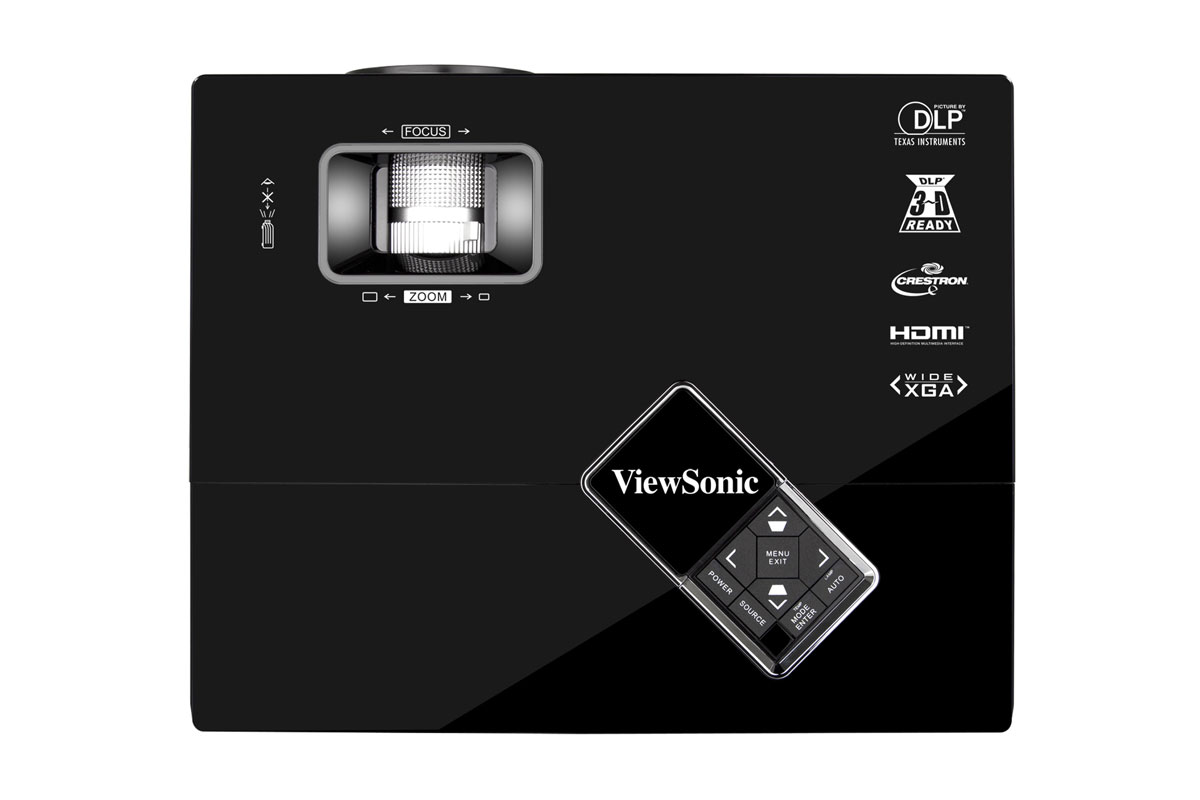ViewSonic PJD6553w review
With its 3,500-lumen brightness, a widescreen resolution, network management facilities and 3D support, ViewSonic has packed some impressive specs into this low-cost, versatile projector. Ben Pitt investigates whether more really is better.
The bright lamp, high resolution, Ethernet-based remote control web interface and low price look great on paper, and the superb colours and straightforward operation mean it's pretty impressive in the flesh, too. Less-than-perfect focus and the high cost of replacement lamps take the shine off, though. Until such time as we see a better-performing business projector at this price, we'll give it a cautious recommendation.
With desktop DLP projectors now available from around 200 ex VAT, 500 is enough for something a bit more upmarket. ViewSonic's latest sets itself apart with an unusually bright 3,500 lumens and widescreen 1280x800 pixel resolution.
These are impressive specs for the price. There are various projectors for around 500 that deliver one or the other, but this is the lowest price we can find for one with both of these specifications. Replacement lamps are relatively pricey, though, at 198 ex VAT. That equates to 5.7p per hour over the 3,500-hour lamp life.

The bright lamp has clear benefits in classrooms, lecture halls and offices where the projector has to compete with natural light. The wide-aspect (16:10) resolution might go down well in these environments too, as it's closer to the aspect ratios of most modern laptops and computer monitors. This enables users to duplicate their computer's image with the minimum of fuss. 16:9 is more common on laptops, but the projector had no problem automatically letterboxing the various signals we fed it with to maintain the correct aspect ratio. There's a lot of inertia for 4:3 projectors in business environments, though, with most projector screens and many people designing presentations in this aspect ratio. Business buyers should therefore think carefully about whether a widescreen projector is right for them.
The PJD6553w is a handsome device, although its beauty is somewhat short-lived because the glossy plastic finish shows up dust and fingerprints. At 2.6kg and 294mm wide, it's small enough to be carried from room to room. Accurate positioning is helped by a ratcheted front foot raise the projector to the desired angle, release the catch and the foot drops down to the correct height. With the foot fully retracted, the lens is the same height as the base of the image. One of the rear feet is threaded to make small adjustments to compensate for uneven surfaces, although it could be a little stiffer to avoid accidental adjustment during transit. The 1.3x optical zoom and throw ratio range of 1.21 to 1.57:1 provide a little flexibility in positioning. Keystone correction is a manual process.
Get the ITPro daily newsletter
Sign up today and you will receive a free copy of our Future Focus 2025 report - the leading guidance on AI, cybersecurity and other IT challenges as per 700+ senior executives
-
 Cleo attack victim list grows as Hertz confirms customer data stolen – and security experts say it won't be the last
Cleo attack victim list grows as Hertz confirms customer data stolen – and security experts say it won't be the lastNews Hertz has confirmed it suffered a data breach as a result of the Cleo zero-day vulnerability in late 2024, with the car rental giant warning that customer data was stolen.
By Ross Kelly Published
-
 Women show more team spirit when it comes to cybersecurity, yet they're still missing out on opportunities
Women show more team spirit when it comes to cybersecurity, yet they're still missing out on opportunitiesNews While they're more likely to believe that responsibility should be shared, women are less likely to get the necessary training
By Emma Woollacott Published
-
 OpenAI wants developers using its new GPT-4.1 models – but how do they compare to Claude and Gemini on coding tasks?
OpenAI wants developers using its new GPT-4.1 models – but how do they compare to Claude and Gemini on coding tasks?News OpenAI says its GPT-4.1 model family offers sizable improvements for coding, but tests show competitors still outperform it in key areas.
By Ross Kelly Published